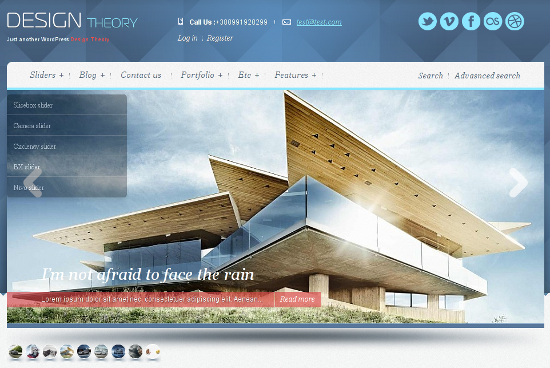Table Of Content

It’s easy to admire the effect as a whole without looking past it at the nuts and bolts—the elements that are set together so well and according to age-old principles so as to create that ‘wow’ effect. Scale can be used to create a hierarchy for and add emphasis to certain elements on a design. By using scale to make an element larger than others appearing with it, you can emphasise that element. Not only can you make an element stand out this way—you can also use scale to create a sense of depth (since nearer objects appear larger to the human eye). Exaggerated scales of images also add a certain level of interest and drama to them.
Design thinking, explained
Which elements to emphasize depends on the brief you as a designer are given; for example, if an article’s heading is more important than the caption, the heading should be more visually compelling. Viewers must pick up the key points and message within seconds, which can only be done if the design has a compelling hierarchy. It is weight distributed in the design by the placement of different design elements. Balance can vary depending on the elements, which include positioning, contrasting, texture, and shape among others.
Contents
“Accidentally” grouping elements which are not conceptually similar will result in confused users. For instance, consistency ensures that controls remain uniform throughout a design, while proximity suggests related items be grouped. Visual hierarchy places importance on presenting the most vital information at the top. By understanding and applying these principles, designers can create intuitive, aesthetically pleasing, and practical designs that cater to user needs and preferences.
Key Insights
Design principles are guidelines, biases and design considerations that designers apply with discretion. Professionals from many disciplines—e.g., behavioral science, sociology, physics and ergonomics—provided the foundation for design principles via their accumulated knowledge and experience. An example of early design science was Altshuller's Theory of inventive problem solving, known as TRIZ, which originated in the Soviet Union in the 1940s.
You’ll also learn why visual design is so important, how history influences the present, and practical applications to improve your own work. These insights will help you to achieve the best possible user experience. Visual design is about creating and making the general aesthetics of a product consistent. To create the aesthetic style of a website or app, we work with fundamental elements of visual design, arranging them according to principles of design. These elements and principles together form the building blocks of visual design, and a firm understanding of them is crucial in creating a visual design of any product. The principles of design in art are foundational concepts that guide the creation and evaluation of artworks, ensuring visual harmony, balance, and cohesion.
Design thinking can be applied to any problem that needs a creative solution. When Eppinger ran into a primary school educator who told him design thinking was big in his school, Eppinger thought he meant that they were teaching students the tenets of design thinking. No matter your schedule or learning style, you can find a design theory course at Noble Desktop. The school runs many different in-person classes at its Manhattan campus, as well as a variety of online courses. Whether online or in-person, all class groups are small and feature instructors who are experts in their fields.
Visual Aesthetics
This kind of creation has been applied by many businessmen who run their business on the basis of the internet. And today, this design has been very popular among people all over the world. Central to the design thinking process is prototyping and testing (more on that later) which allows designers to try, to fail, and to learn what works. Testing also involves customers, and that continued involvement provides essential user feedback on potential designs and use cases. If the MIT-Altitude team studying walkers had ended user involvement after its initial interviews, it would likely have ended up with a walker that didn’t work very well for customers.
The Unexpected Red Theory Is Trending in Interior Design - Apartment Therapy
The Unexpected Red Theory Is Trending in Interior Design.
Posted: Sat, 03 Feb 2024 08:00:00 GMT [source]

Here, we dive into the ingenuity behind the Red Thread Theory and how you too can adopt this Nordic concept in your own home to help your space to sing a harmonious tune. Being able to correctly choose a color and harness its potential is the mark of a successful designers. Color theory also considers how the different factors that must be contemplated when colors are chosen for a design, though how a color is received differs person-to-person. This one focuses on the creation of products on the basis of the functionality of the products produced. The main points to be considered are the display of the product and its ergonomic sides.
Color Psychology
It is foundational to the pursuit of design, photography, illustration and visual arts in general. This common visual language connects designers and image makers from history to current day and continent to continent. Visual hierarchy refers to the order in which the human eye scans information. A good designer achieves this by creating contrasting visual elements that dominate others through use of color, size or form.
Gestalt refers to our tendency to perceive the sum of all parts as opposed to the individual elements. The human eye and brain perceive a unified shape in a different way to the way they perceive the individual parts of such shapes. In particular, we tend to perceive the overall shape of an object first, before perceiving the details (lines, textures, etc.) of the object. When we’re designing websites, we can make use of a grid for achieving a sense of unity, since elements organised in a grid will follow an orderly arrangement.
We can use colour, shape, contrast, scale, and/or positioning to achieve this. For instance, most websites have a main “hero” image, which uses dominance to appeal to users, drawing them to it naturally. Balance can be achieved by having symmetry in the design (for instance, having a webpage with centralised text and images). However, you can also achieve balance without symmetry — perhaps unsurprisingly, this is known as asymmetrical balance. We achieve asymmetrical balance when we arrange differently sized elements in a way that results in unity. We can imagine a centre point of the design and distribute the elements in a way that creates balance.
Designers Have Some THOUGHTS About the 'Unexpected Red' Theory - ELLE Decor
Designers Have Some THOUGHTS About the 'Unexpected Red' Theory.
Posted: Mon, 26 Feb 2024 08:00:00 GMT [source]
Negative space (also known as white space) is the empty area around a (positive) shape. The relation between the shape and the space is called figure/ground, where the shape is the figure and the area around the shape is the ground. We should be aware that when designing positive shapes, we are also designing negative spaces at the same time. Negative space is just as important as the positive shape itself — because it helps to define the boundaries of the positive space and brings balance to a composition. Design principles are crucial as they provide a foundation for creating compelling, organized, and impactful visuals. They guide how elements interact, ensuring consistency, proximity, and visual hierarchy, as highlighted in this video with Frank Spillers, CEO of Experience Dynamics.
In addition, Noble offers a free retake option, where students can choose to retake a course once within a year. Students who opt for the free retake can gain additional design skills without paying for another class. Noble Desktop offers a number of free resources on the topic for students who want to get a basic understanding of design theory before committing to any class. Its official YouTube page has free design seminars, such as How to Get Started in Graphic Design, and free tutorials on other design-related topics, including its Intro to Type Classifications.

No comments:
Post a Comment